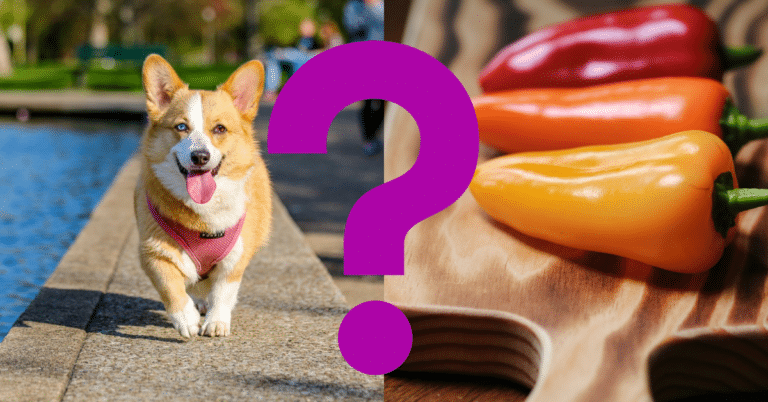Can Dogs Eat Collard Greens? A Vet’s Opinion

Collard greens are cabbage family leafy green vegetables notable for their thick, dark green leaves. But can you feed collard greens to your dog?
Dogs can eat collard greens in moderation. Collard greens are a healthy food that can supply critical vitamins and minerals to dogs. However, it is critical to properly prepare them before feeding them to your dog. Remove the tough stems and thoroughly boil the collard greens to make them simpler to digest. Any condiments, oils, or spices that may be hazardous to your dog should be avoided. Gradually introduce collard greens to your dog’s diet to ensure they tolerate them properly. Before making any significant modifications to your dog’s diet, always consult with your veterinarian.
Benefits Of Collard Greens For Dogs
When collard greens are included in a dog’s diet, they can provide various benefits. Here are some specific collard greens benefits for dogs:
Nutrients
Collard greens are high in critical nutrients such as vitamins A, C, and K and calcium, iron, and fiber. These nutrients help dogs’ overall health and support many physiological functions.
Antioxidants
Collard greens contain antioxidants such as beta-carotene and lutein, which aid in the fight against damaging free radicals in the body. These antioxidants help to maintain a healthy immune system and may lower the risk of certain diseases.
Digestive Health
Collard greens’ fiber content promotes healthy digestion in dogs. It can help with bowel motions and prevent constipation. However, too much fiber can induce intestinal distress, so moderation is essential.
Eye Health
Collard greens’ strong vitamin A and lutein concentration can enhance a dog’s eye health. These nutrients help with vision and may help avoid age-related eye problems.
Bone Health
Collard greens provide the calcium necessary for strong bones and teeth in dogs. Calcium is also essential for muscular function and nerve communication.
Low In Calories
Collard greens are low in calories and fiber, making them an excellent supplement to an overweight or obese dog’s weight management diet. The fiber can help dogs feel fuller for extended periods, reducing the likelihood of overeating.
Anti-Inflammatory Properties
Collard greens have anti-inflammatory qualities due to phytochemicals and other substances. It can be suitable for dogs suffering from inflammatory disorders like arthritis.
Detoxification
Some collard greens components, such as glucosinolates, have been linked to helping the liver’s detoxification functions. It can aid in removing toxins from the body and boost overall health.
While collard greens can be a nutritious supplement to a dog’s diet, they must be adequately prepared (boiled, without seasonings or spices) and fed in moderation as part of a balanced diet. Before adding new items to your dog’s diet, consult a veterinarian.

How To Safely Give Collard Greens To Dogs
To give collard greens to your dog safely, follow these guidelines:
Introduce Collard Greens Gradually
If your dog has never tried collard greens, introduce them carefully to avoid gastric distress. Begin with modest amounts and gradually increase the portion size over a few days, paying close attention to your dog’s behavior.
Choose Fresh and Organic Collard Greens
When possible, choose fresh, organic collard greens. Greens that are wilted, discolored, or show symptoms of decomposition should be avoided.
Remove The Stems And Properly Prepare
Collard greens’ rough stems should be removed since they can be difficult for dogs to digest. To eliminate any dirt or chemicals, thoroughly wash the leaves. Collard greens should be briefly steamed or blanched to make them simpler to chew and digest. Seasonings, oils, and spices should be avoided as they may be toxic to dogs.
Serve In Bite-Sized Pieces
Before giving your dog collard greens, cut them into small, manageable pieces. It reduces choking hazards and makes eating more effortless for them.
Feed In Moderation
While collard greens are nutritious, they should only account for a tiny amount of your dog’s overall diet. Vegetables should account for at most 10% of your dog’s daily caloric intake. Consumption of collard greens in excess might cause digestive distress or nutrient imbalances.
Monitor Your Dog For Any Adverse Reactions
After introducing collard greens, watch for any signs of an adverse reaction, such as vomiting, diarrhea, or gastrointestinal pain. If these symptoms occur, stop eating collard greens and visit your veterinarian.
Consult A Veterinarian
It’s critical to consult your veterinarian before making significant changes to your dog’s diet, such as adding collard greens. They can give you personalized advice based on your dog’s nutritional demands, health concerns, and potential medication interactions.
Remember that each dog is unique, and sensitivities or allergies can differ. While collard greens are typically safe for dogs, it is best to contact a veterinarian to confirm they are compatible with your dog’s overall diet and health needs.
Will Collard Greens Make A Dog Sick?
While collard greens are typically harmless for dogs, they may cause some unpleasant effects or gastrointestinal difficulties in some dogs. Consider the following possibilities:
Digestive Upset: If collard greens are consumed in large quantities or their digestive system is sensitive to new meals, some dogs may develop digestive upset such as diarrhea, vomiting, or gas.
Allergic Reactions: Although uncommon, some dogs may be allergic to collard greens. Itching, hives, swelling, difficulty breathing, or gastrointestinal problems are all symptoms of an allergic reaction. If these symptoms appear, stop eating collard greens and visit a veterinarian.
Concerns About Oxalates: Collard greens contain oxalates, which can cause calcium oxalate crystals to develop in the urinary tract. Excessive eating of collard greens in dogs predisposed to calcium oxalate bladder stones or urinary problems may aggravate these diseases. Dogs with a history of urinary problems should be appropriately monitored if given collard greens.
Intestinal Blockage: The stiff stems of collard greens can cause choking in dogs and intestinal blockage. To avoid such problems, remove the stems and cut the greens into little, easily digestible pieces.
Interaction With Drugs: Collard greens may interfere with certain drugs or medical conditions. Collard greens, for example, have a high vitamin K concentration and should be avoided by dogs on blood thinners or with thyroid disorders. If your dog has any underlying health concerns or is on medication, always discuss them with your veterinarian.
Pesticides: Non-organic collard greens may contain pesticide residues that are toxic to dogs. To reduce pesticide exposure, consider organic collard greens or carefully wash commercially farmed collard greens.
Remember that every dog is unique, and their tolerance and reaction to collard greens may differ. If you have any worries or see any adverse effects after giving collard greens to your dog, you should speak with a veterinarian.
Can dogs eat collard greens variations?
Yes, dogs can eat different collard greens if they are safe and adequately prepared. The following are some common collard greens varieties that dogs can eat:
Collard Greens, Cooked: Dogs can eat collard greens that have been lightly steamed or blanched. Cooking the leaves makes them more digestible and manageable for dogs to chew.
Plain Collard Greens: Dogs should eat plain collard greens with no added condiments, spices, or oils. These substances can be toxic to dogs and cause stomach problems.
Raw collard greens: While raw collard greens are more difficult to digest, some dogs like chewing on raw leaves as a natural way to clean their teeth and provide mental stimulation. However, moderation is essential; some dogs may struggle to digest raw collard greens.
Frozen Collard Greens: Frozen collard greens can be given to dogs as a pleasant treat, especially during hot weather. Freezing can change the texture and taste of food, giving dogs a new experience.
It is crucial to remember that, regardless of the variety, collard greens should be adequately prepared and consumed in moderation as part of a healthy diet. To avoid choking dangers and aid digestion, remove tough stems, carefully wash the leaves, then cut them into little, bite-sized pieces.

Vet’s Summary
Collard greens, when provided in moderation and properly cooked, can be a nutritious addition to a dog’s diet. They give vitamins, minerals, fiber, and antioxidants, which can help overall health, digestion, eye health, bone health, weight control, and anti-inflammatory properties. However, it is critical to introduce collard greens gradually, remove stiff stems, fully prepare them, and avoid condiments and spices. While collard greens are typically harmless, some dogs may be sensitive or allergic to them, and excessive ingestion might cause digestive discomfort or other problems. Before making significant nutritional modifications, it is best to consult with a veterinarian.
Recommendation: Besides including collard greens in a dog’s diet, the owner should consider giving their dog probiotic pills. Probiotics can enhance digestive health in dogs by promoting a healthy balance of gut bacteria. They can be especially beneficial if the dog has digestive disorders or has just received antibiotic treatment, which can upset the natural gut flora. Probiotic supplements designed exclusively for dogs are available and can be addressed with your veterinarian. However, it is critical to check with a veterinarian to establish the best probiotic strain, dosage, and duration of supplementation based on the dog’s specific needs and health circumstances.
Videos To Watch
If you are wondering what related foods are good to give your dog, watch this:
And if you want to know what a dog can NOT eat, watch this:






